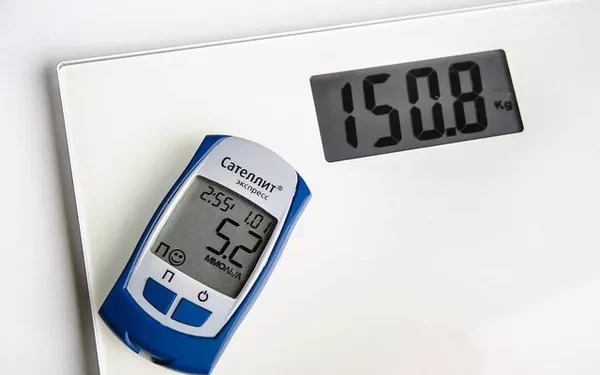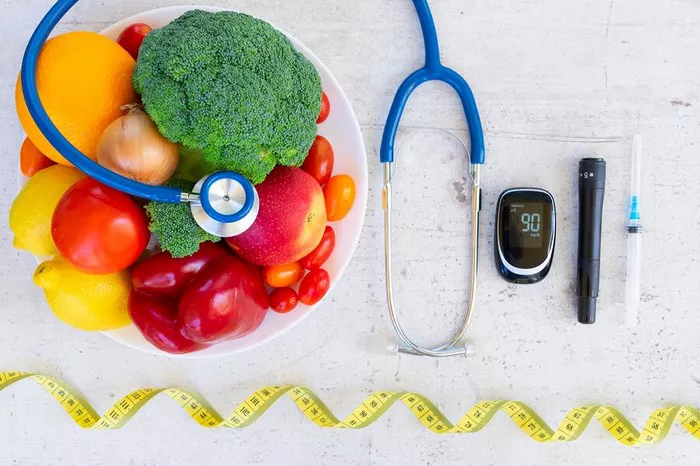Blood sugar monitoring is a crucial practice for managing diabetes and maintaining overall health. It plays an integral role in guiding treatment decisions, preventing complications, and empowering individuals with the information they need to make informed choices about their diet, exercise, and medication. While it is essential for people with diabetes, it may also benefit those at risk of the condition, or even those without it, in some cases. But is it truly worth the time, effort, and expense?
In this article, we will explore the significance of monitoring blood sugar, whether it’s necessary for everyone, and the potential benefits and limitations of this practice. We will also look at the latest advancements in monitoring technology and offer insight into how to make blood sugar testing an effective part of your health management strategy.
Understanding Blood Sugar Monitoring
Before diving into the pros and cons, it’s essential to understand what blood sugar monitoring entails. Blood sugar (or blood glucose) levels indicate the amount of glucose circulating in the bloodstream. Glucose is the body’s primary source of energy, derived from carbohydrates in the food we eat. The pancreas regulates blood sugar by producing insulin, a hormone that helps cells absorb glucose for energy. However, in diabetes, this regulatory system is compromised, leading to either insufficient insulin production or resistance to insulin’s effects.
Blood sugar monitoring typically involves measuring glucose levels at various points throughout the day. It can be done using different methods, including fingerstick tests, continuous glucose monitors (CGMs), and laboratory tests like hemoglobin A1c. Regular monitoring helps track fluctuations in blood sugar levels, which may signal the need for changes in diet, physical activity, or medication.
The Benefits of Blood Sugar Monitoring
1. Managing Diabetes Effectively
For individuals diagnosed with diabetes, blood sugar monitoring is not only beneficial—it is essential. Consistently measuring blood glucose allows patients and their healthcare providers to make necessary adjustments to their treatment plans. Here’s how monitoring helps:
Personalized Treatment Plans: Each individual’s diabetes is unique. By regularly measuring blood sugar levels, healthcare providers can adjust medication types and dosages, helping individuals maintain blood glucose within a target range.
Avoiding Complications: Consistent monitoring can help prevent complications related to poorly controlled blood sugar levels, including cardiovascular disease, nerve damage, and kidney dysfunction. By tracking glucose fluctuations, healthcare providers can intervene before these complications develop.
Informed Decision-Making: Regular blood sugar testing empowers individuals with knowledge about how food, exercise, stress, and medication affect their blood glucose levels. This leads to informed decisions about lifestyle choices and a sense of control over their condition.
2. Preventing Hypoglycemia and Hyperglycemia
Hypoglycemia (low blood sugar) and hyperglycemia (high blood sugar) are both dangerous and common concerns for individuals with diabetes. Severe hypoglycemia can lead to fainting, seizures, and even coma, while chronic hyperglycemia increases the risk of long-term complications like heart disease and nerve damage.
Hypoglycemia: Monitoring blood glucose ensures that a person can detect low blood sugar early, before it becomes dangerous. Recognizing symptoms such as shakiness, confusion, or dizziness, and then taking quick corrective actions like consuming a glucose source, can prevent more severe consequences.
Hyperglycemia: Similarly, regular testing helps to spot high blood sugar levels, which can cause symptoms like excessive thirst, frequent urination, and fatigue. Early intervention with medication or changes in diet can prevent long-term damage to organs and tissues.
3. Tailoring Diet and Exercise Plans
One of the most significant advantages of blood sugar monitoring is the ability to adjust lifestyle habits like diet and exercise. By observing how blood glucose responds to certain foods and activities, individuals can tailor their choices to maintain optimal blood sugar control.
Diet: Some foods can cause blood sugar spikes, while others may help stabilize it. Regular monitoring after meals helps individuals identify which foods affect their blood sugar the most, guiding them to make healthier food choices.
Exercise: Physical activity is crucial for managing diabetes, but it also has a direct impact on blood sugar levels. Monitoring before and after exercise helps individuals understand how their body responds to different types of exercise, enabling them to plan workouts more effectively.
4. Preventing the Need for Emergency Care
Consistent blood glucose testing can prevent the need for emergency care by identifying issues before they escalate. For example, if blood sugar levels become too high or too low, immediate action can be taken at home, reducing the risk of hospitalization or emergency intervention.
Is Blood Sugar Monitoring Necessary for Everyone?
While blood sugar monitoring is undoubtedly important for people with diabetes, there’s debate about whether it is necessary for those without the condition or those at risk. Let’s consider a few situations in which blood sugar monitoring might still be beneficial.
1. Prediabetes
For individuals with prediabetes, a condition where blood sugar levels are higher than normal but not yet high enough for a diabetes diagnosis, monitoring can provide early insight into how lifestyle changes (like diet and exercise) impact blood sugar levels. Regular monitoring can act as a wake-up call, motivating individuals to adopt healthier habits before diabetes develops.
In prediabetes, blood sugar monitoring can also help individuals track the effectiveness of interventions, such as weight loss, improved diet, and increased physical activity, and see how these changes influence their glucose levels.
2. Gestational Diabetes
During pregnancy, some women develop gestational diabetes, which requires blood sugar monitoring to ensure both the health of the mother and the baby. Gestational diabetes typically resolves after pregnancy, but it increases the risk of developing type 2 diabetes later in life. Regular monitoring can help ensure that glucose levels remain in a safe range during pregnancy.
3. At-Risk Populations
Certain populations may also benefit from blood sugar monitoring, even if they do not have diabetes. For example, people with a family history of diabetes or individuals who are overweight or have high blood pressure may be at higher risk of developing the condition in the future. Monitoring can provide early warnings of changes in blood sugar levels, allowing individuals to make lifestyle adjustments before reaching diabetic levels.
4. General Health and Wellness
Some health-conscious individuals may opt for blood sugar monitoring as part of their overall wellness routine, even if they do not have diabetes or prediabetes. Monitoring blood sugar can provide valuable insights into how different foods, activities, and stressors impact health. For example, athletes may use blood glucose data to optimize their nutrition and performance. However, for most individuals without diabetes, blood sugar monitoring is generally not a necessary or cost-effective practice.
The Drawbacks and Limitations of Blood Sugar Monitoring
While blood sugar monitoring offers numerous benefits, there are some limitations to consider.
1. Cost and Accessibility
Frequent blood sugar testing can be expensive, especially if an individual requires advanced technology like continuous glucose monitors (CGMs). Test strips, lancets, and sensors are ongoing expenses, and insurance coverage may not always fully cover the costs, making it a financial burden for some individuals.
For those without diabetes or at-risk individuals, the cost of blood sugar monitoring may outweigh the benefits, particularly if there are no immediate concerns regarding blood sugar levels.
2. Inaccuracies and False Readings
Blood glucose meters and CGMs can sometimes provide inaccurate readings due to various factors, such as poor calibration, improper use, or interference from certain medications. Inaccurate readings can lead to unnecessary panic or false reassurance, potentially causing individuals to make decisions that are not in their best interest.
To minimize inaccuracies, it is important to use devices correctly, follow guidelines for calibration, and consult with a healthcare provider if there are concerns about accuracy.
3. Psychological Impact
For individuals with diabetes, constant monitoring can be psychologically taxing. The pressure to maintain perfect blood sugar control can lead to anxiety, stress, and burnout. Some individuals may also experience a sense of guilt or frustration if their blood sugar levels fluctuate outside of the desired range. It’s essential for individuals to seek support and guidance from healthcare professionals to manage the emotional and mental health challenges associated with blood sugar monitoring.
4. Limited Information
While blood sugar monitoring provides valuable data about glucose levels, it does not offer a complete picture of overall health. Other factors, such as blood pressure, cholesterol levels, and organ function, are also crucial for managing health, especially for individuals with diabetes. Blood sugar monitoring should be seen as one part of a broader health strategy, rather than a comprehensive solution.
The Future of Blood Sugar Monitoring
Recent advancements in blood sugar monitoring technology are improving the accuracy, convenience, and accessibility of testing. Continuous glucose monitoring (CGM) devices, for example, have revolutionized how individuals manage diabetes by providing real-time data on glucose fluctuations throughout the day and night. These devices can automatically alert users when their blood sugar levels are too high or too low, providing an additional layer of safety.
The rise of wearable devices and mobile health apps is also making it easier to track and interpret blood sugar data. Some devices now integrate with smartphones to provide users with instant feedback, trends, and personalized recommendations. These advancements are making blood sugar monitoring more accessible and less intrusive, particularly for individuals with diabetes who need to monitor their glucose levels multiple times a day.
Conclusion
So, is it worth monitoring blood sugar? For individuals with diabetes, prediabetes, or gestational diabetes, the answer is a resounding yes. Regular blood sugar monitoring is essential for managing these conditions and preventing complications. Even those without diabetes may benefit from occasional monitoring, particularly if they are at risk or have a family history of the condition.
However, for most healthy individuals, blood sugar monitoring is not necessary on a routine basis. The practice can be costly, and the benefits may not justify the investment, especially when other aspects of health, such as diet, exercise, and overall well-being, play a significant role in preventing chronic conditions like diabetes.
Ultimately, blood sugar monitoring is a valuable tool, but it should be used in conjunction with a broader health strategy. Consult with a healthcare provider to determine whether blood sugar monitoring is necessary for your specific situation and how to make the most of this important practice.
Related topics:
What’s Normal Blood Sugar Readings



























